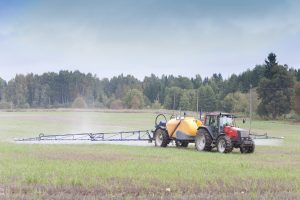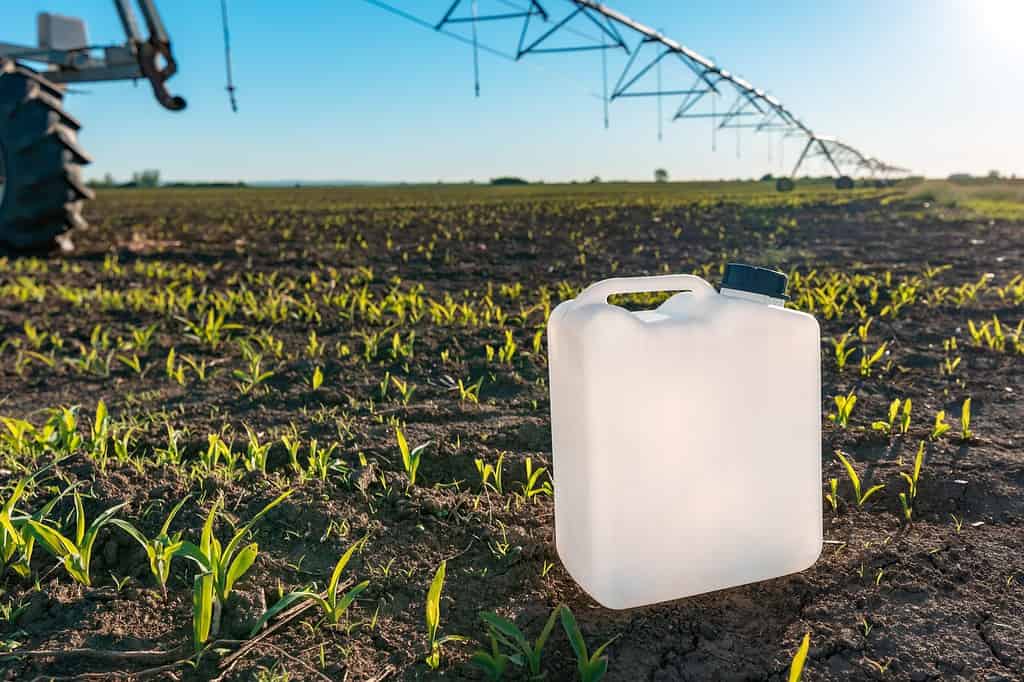Since 2017, victims of paraquat exposure have been filing paraquat lawsuits alleging that Chevron and Syngenta purposely failed to disclose that their herbicide (paraquat) increased the risk of Parkinson’s disease. With several studies linking the weed killer to the disease, the number of lawsuits has been increasing steadily.
In June 2021, plaintiffs in approximately 16 California paraquat lawsuits settled their claims with the product manufacturer for an undisclosed amount. The cases were consolidated into a state Judicial Panel Coordination proceeding in 2019. It means that the time from coordination to settlement spanned about two years.
However, a significant number of paraquat lawsuits in different parts of the country seem to be headed to federal courts. In June 2021, the Judicial Panel on Multidistrict Litigation was formed and all paraquat lawsuits in federal courts were transferred to the Southern District of Illinois.
Typically, multidistrict litigation allows one judge to oversee the discovery, pre-trial motions, and other proceedings related to a case. However, it remains to be seen when the MDL will yield results for the plaintiffs.
So, when will paraquat lawsuits settle, and what is the current status on the cases? Here is everything you need to know.
Discovery Is Ongoing
Currently, the parties in the MDL that were transferred to the Southern District of Illinois are conducting discovery. The court has already established a schedule and protocol for the discovery stage.
During discovery, the parties involved in the case exchange critical information about the case. There may be a request for documents, interrogations, and requests to admit particular statements as part of the evidence.
In paraquat lawsuits, the parties involved may request critical information through fact sheets and request for production of documents such as medical records
Through guided interrogations, parties can learn the factual bases for various claims, descriptions of the claimed injuries, and defenses that have been put forward.

The parties may also depose witnesses, interrogating them under oath about the facts of exposure, injuries, and their general knowledge on the dangers of weed killer.
The discovery phase of the MDL is ongoing, and the court had set June 17, 2022, as the deadline for the completion of expert depositions. So, the case should move into the pre-trial stage any time from now.
Pre-trial Motions
The strength of the pre-trial motion usually shapes the willingness of the involved parties to settle while outlining reasonable thresholds for a possible settlement.
In a typical civil lawsuit, involved parties will file motions for summary judgment to set the stage for settling the case without a jury trial.
In most cases, the moving party argues that the other party has not produced or cannot produce sufficient evidence to support/overcome a defense or claim.
Defendants rely upon affidavits, records, discovery responses, and any other materials the plaintiff presents to prove that there is nothing for a jury to hear.
In typical product liability or negligence cases, the summary judgment motions involve time bars for the filing and maintenance of lawsuits. A defendant may invoke a statute of limitation to claim that the plaintiff failed to file the case.

The statute of limitations in paraquat lawsuits usually kicks off when the complainant receives a diagnosis of Parkinson’s disease. Although the time varies from state to state, typical personal injury statute of limitations runs between two and four years.
Summary judgment may also trigger the application of the statutes of repose. This deadline usually runs from the date of purchase or use of the product. It means that states of repose run for a significantly longer time than the statute of limitations.
For paraquat cases consolidated in the MDL, involved parties have until July 1, 2022, to file the summary judgment motions. The same deadline also applies to any motions filed to exclude unqualified or unreliable evidence or expert opinions from a possible trial.
When Will Paraquat Lawsuit Trials Begin?
The first trial in the MDL in the Southern District of Illinois has been scheduled to kick off on November 15, 2022. Subsequent trials will occur on March 13, June 12, and September 18, 2023.
With the relatively high number of paraquat lawsuits in the MDL, the case management order has established a method for selecting specific cases for trial.
The plaintiffs are expected to nominate eight cases, while Syngenta (manufacturer of paraquat) is expected to choose four from the nominated eight for early trials.
To qualify for an early trial, the plaintiff must have filed their case no later than December 3, 2021, and submitted the Plaintiff Assessment Questionnaire to the defendant’s lawyer no later than December 8, 2021.

The chosen cases will proceed to early trial serving as bellwethers that will give the court and other litigants in the MDL guidance on the prospects of possible jury awards or the overall merits of the paraquat cases.
It is good to mention that Roundup cases followed a similar path. Plaintiffs in one roundup case won over $289million in compensation while a California jury awarded another plaintiff $80million. However, Bayer (the manufacturer of Roundup) has won in some trials.
How Long Do Lawsuits Like This One Typically Take?
Generally, it could take years for an MDL to be completed. The average court duration of an MDL is about six years.
The Roundup litigation took over four years for the first trial to commence, while the first paraquat trial is not expected until November 15, 2022 – almost four years from the date the MDL was established.
What Are Paraquat Settlements?
A settlement is the ultimate goal of your paraquat lawsuit. Once your paraquat lawsuit attorney has reviewed your evidence and established a solid foundation for your case, the process moves into the negotiation phase.
During negotiation, your attorney will speak with the defendant’s lawyers and try to come up with an agreement. This agreement is usually known as a settlement and contains provisions of restitution that compensate you for damages suffered as a result of paraquat exposure.
The damages include but are not limited to medical expenses, lost wages, pain and suffering, emotional trauma, and any other damages accrued as a result of the exposure.
If your attorney cannot reach an agreement with the defendant, your case will proceed to trial. If your case proceeds to trial, you will only receive compensation through a jury award.
What Are the Potential Paraquat Settlement Amounts?
As of 2022, there have been no paraquat settlements, and settlement amounts are not guaranteed either. In fact, every lawsuit depends on the unique facts and circumstances of the case.
Like other mass tort settlements that we have witnessed before, the potential paraquat settlement amount largely depends on a wide range of factors, including but not limited to:
- The final global settlement amount.
- The total number of plaintiffs involved in the mass tort.
- The severity of your injuries.
- The strength of the evidence supporting your case.
Looking back at similar and recent product liability lawsuits, we can get a rough idea of the potential settlement amounts for paraquat lawsuits.
Bayer, the manufacturer of Roundup herbicide, agreed to a $10.6billion settlement of thousands of claims alleging that the weed killer causes cancer.

A report published by New York Times claimed that Roundup victims could receive between $5,000 and $250,000 in compensation depending on the facts surrounding their case and the severity of their injuries.
Roundup lawsuits are quite like paraquat lawsuits since both of them are herbicides that have been put in the spotlight for causing health problems. Therefore, the settlement amounts could also be similar.
In the Johnson & Johnson product liability case, the company agreed to pay over $4.7billion to settle thousands of lawsuits alleging the company failed to warn consumers that their talc powder contained cancer-causing asbestos.
Do I Qualify for Paraquat Lawsuit?
To qualify for the paraquat lawsuit, you must have been exposed to the herbicide and suffered injuries as a result of the exposure.
You may be eligible for compensation if you can prove that the paraquat product was defective and that the manufacturer failed to warn about the risks associated with using their products.
The people at the highest risk for dangerous amounts of paraquat exposure include farmers, people who live near farms, people exposed to farm animals, people who drink well water, people who live in rural areas, and those with known exposure to pesticides.
If you or a loved one has been diagnosed with Parkinson’s disease after being exposed to paraquat, you may be able to file a paraquat lawsuit to seek compensation for your injuries.
Contact a Paraquat Lawyer Today
If you or a loved one has been diagnosed with Parkinson’s disease after exposure to paraquat, contact us today to discuss your legal options.
Our experienced paraquat lawyer can help you gather evidence to support your claim and build a strong case against the herbicide manufacturers.

